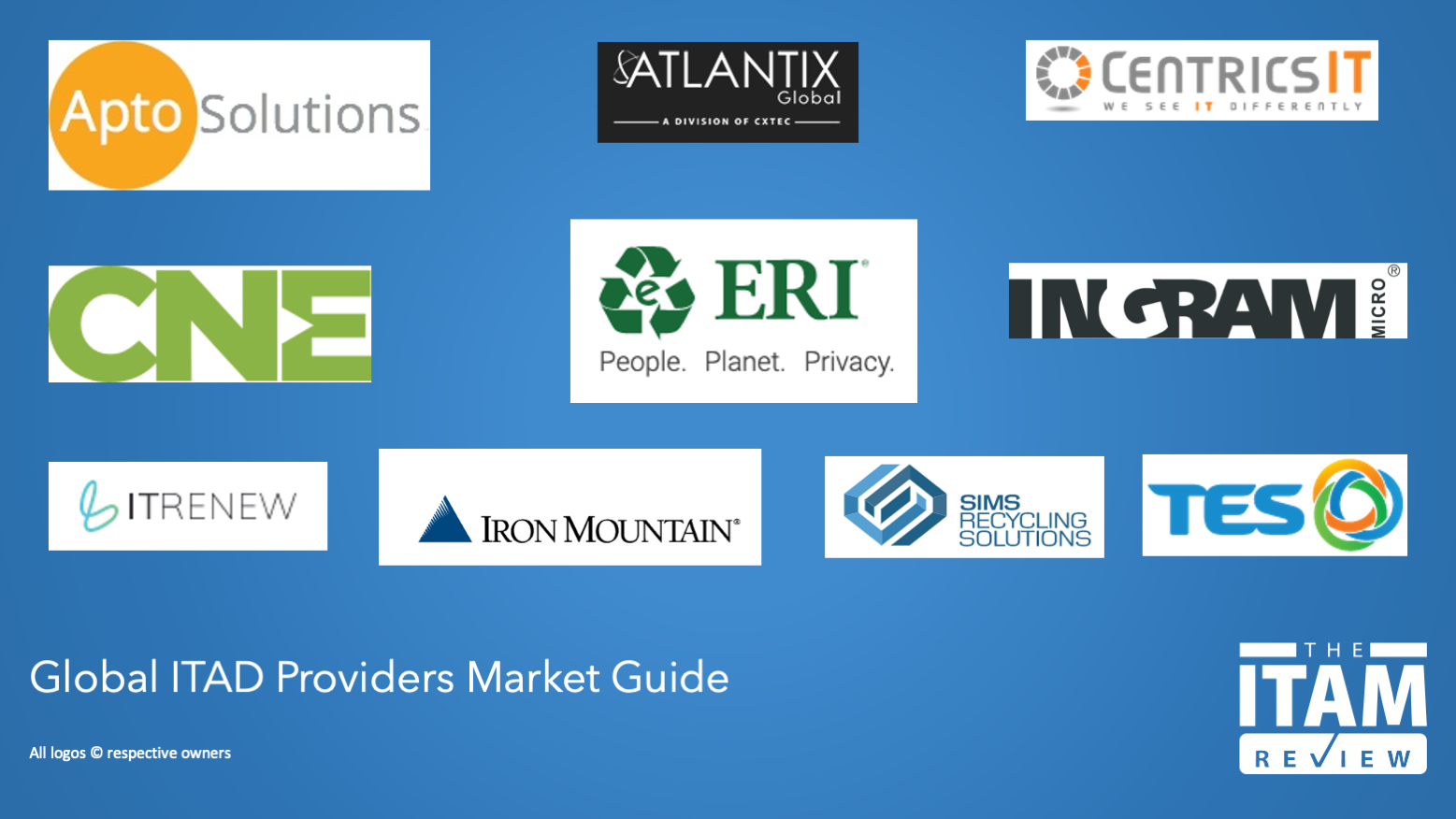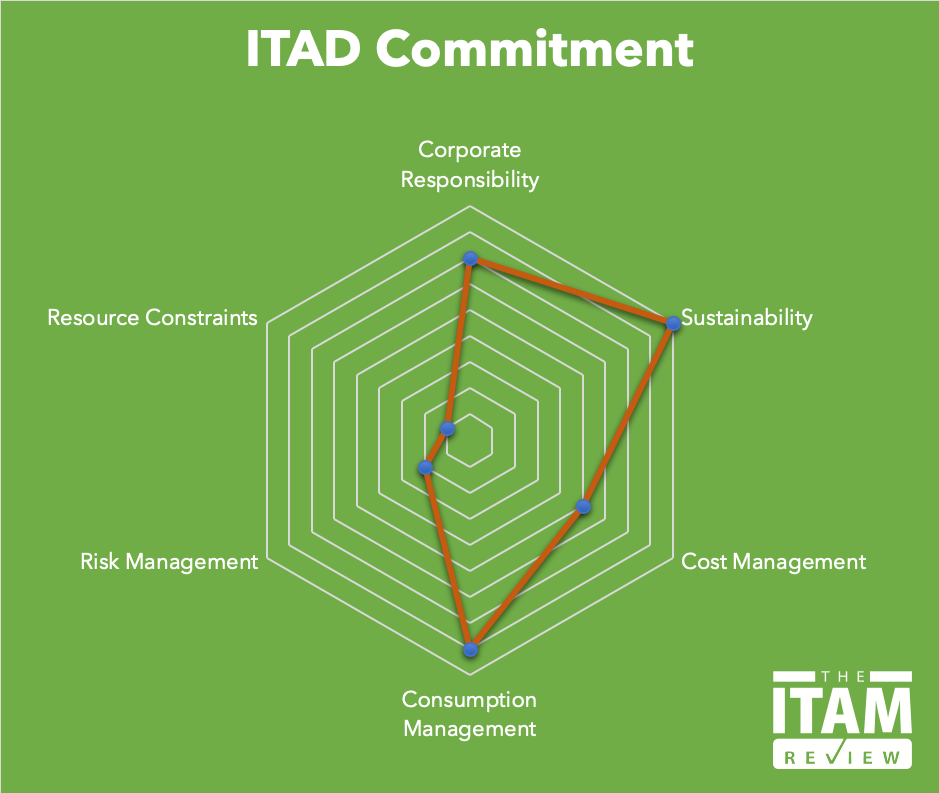Market Guide - IT Asset Disposal (ITAD) Providers
 Appropriately enough for Halloween, October’s Market Guide looks at the end of the IT Asset lifecycle – disposition. IT Asset Disposition (ITAD) is concerned with managing the end-of-ownership of your devices – those you no longer require, or have no use for, are considered unrepairable, or have simply reached their end-of-life. For a number of reasons highlighted in this article, this part of the lifecycle is best handled by dedicated providers, and this is where IT Asset Disposition service providers come in.
Appropriately enough for Halloween, October’s Market Guide looks at the end of the IT Asset lifecycle – disposition. IT Asset Disposition (ITAD) is concerned with managing the end-of-ownership of your devices – those you no longer require, or have no use for, are considered unrepairable, or have simply reached their end-of-life. For a number of reasons highlighted in this article, this part of the lifecycle is best handled by dedicated providers, and this is where IT Asset Disposition service providers come in.
Click here to access the Market Guide
Disposition, not disposal?
IT’s love for acronyms has caused a bit of an identity crisis for the Disposition industry. Some asset owners may see this part of the lifecycle as “Disposal”, with the connotation of throwing something away. Whilst assets sent for disposition may indeed end up being sent for scrap, as the focus on sustainability and the circular economy grows, disposal should be seen as a last resort rather than an automatic destination for unwanted hardware.
Why is ITAD important?
Disposition of electrical and electronic equipment is tightly regulated in many jurisdictions, largely on the grounds of protecting the environment and enforcing responsible handling of scrap materials. Pioneering legislation includes the European Union’s WEEE directive and the Basel Convention. Legislation has driven the development & growth of the ITAD industry and ITAD providers typically now provide some or all of these services:
- Refurbishment
- Data Destruction
- Resale
- Secure asset logistics
- Regulated recycling to agreed standards
- Management Reporting
- Legal & Regulatory Compliance
These services address a growing problem. Recent research estimates 50 million tonnes of eWaste are generated worldwide annually, and this is expected to double in the next 30 years. In terms of cost to IT departments, current hardware and device expenditure worldwide is estimated at $900bn per annum. Given the typical lifecycle of 3 to 5 years for IT assets that’s a huge investment that’s contributing to the waste stream, and a huge opportunity to create an ITAD programme that’s cost-neutral or even cost-positive.
What’s the value of ITAD to an ITAM team?
ITAD providers help ITAM teams deliver on the following:
- Hardware Asset Management
- Certified removal of licensed software
- Cost Management
- Risk Management
These deliverables may be integrated. For example, identifying a laptop for disposition enables removal of licensed software and reduces cost by enabling authorised reassignment of that software. An integrated ITAD provider will be able to identify hardware that can be recycled and reissued internally, thereby cutting costs. They may even handle on-site refurbishment and re-initialisation of that hardware. And proven, secure, and guaranteed removal of data stored on devices is critical for compliance with laws such as GDPR.
Clearly, every laptop put back into the internal lifecycle by an ITAD provider reduces technology costs for the organisation, and there is an opportunity for ITAM teams to own and drive that process. Equally, ITAM teams may also add value by supporting stakeholders such as Service Desk or Build teams with ITAD-related tasks.
Strategic ITAD
For strategic ITAM teams, involvement in the ITAD part of the lifecycle can demonstrate value to senior leadership teams concerned with corporate responsibility and sustainability. With an increasing global focus on reducing plastic usage, and consumption in general, this is likely to be an area where ITAM teams can take the opportunity to drive and champion change in established business processes.
Your organisation’s approach to ITAD – other than meeting regulatory and legal minimums – will depend on a number of factors and ITAM teams are well-placed to champion an ITAD programme. Variables affecting how an organisation approaches ITAD include;
- Corporate Responsibility
- Sustainability
- Cost Management
- Consumption Management
- Risk Management
- Resource constraints
For example, your organisation may decide that personal computing devices are replaced every three years, and mobile phones are replaced every two. They may decide that their risk appetite requires that all data-containing devices are destroyed rather than recycled. They may not have a strong commitment to sustainability and may not be gathering metrics on technology consumption as part of their corporate responsibility reporting.
Alternatively, they may sweat assets for as long as possible, only use destruction facilities as a last resort, and track asset recycling as a Corporate Responsibility metric.
Mapping these motivators can provide insight into the type of ITAD provider you require.
In the example below the organisation is committed to sustainability and cost management but is resource-constrained – therefore selecting a partner to manage as much of the ITAD process as possible with a strong focus on re-use would be an optimum strategy.
Choosing an ITAD Provider
Choosing an ITAD provider is not just about finding a quick solution to meet regulatory requirements. As noted above, you should first assess what your organisation wants to achieve beyond the regulatory minimum. There is a huge degree of flexibility here. The right approach can mean ITAD generates revenue for your organisation and cuts cost by providing access to refurbished equipment. The right ITAD partner, one focusing on the “Re-use” rung of the waste hierarchy, can mean you also reduce your reliance on purchasing new equipment, thereby reducing demand and resource usage. As public opinion and lobbyists focus on sustainability and environmental concerns ITAD provides businesses with the opportunity to be seen as acting responsibly whilst reducing costs – a win-win.
Conclusion
Are you using an ITAD provider? What were the key factors considered in selecting that provider? Did you as an ITAM professional have a say in the selection of the provider? If not, who made the decision? Please follow up in the comments section.
Click here to access the Market Guide
Can’t find what you’re looking for?
More from ITAM News & Analysis
-
Flexera is first SAM tool vendor verified for Oracle E-Business Suite applications
Flexera has announced that it has been verified as the first software asset management (SAM) tool vendor for Oracle E-Business Suite applications. Almost anyone with an Oracle estate will be familiar with the company’s License Management ... -
ITAMantics - March 2024
Welcome to the March 2024 edition of ITAMantics, where George, Rich and Ryan discuss the month’s ITAM news. Up for discussion this month are. Listen to the full ITAMantics podcast above or queue it up from ... -
ITAM & AI, FinOps, Containers, ESG, security: The many ways in which ITAM has matured beyond its roots
ITAM, AI, FinOps, Containers, ESG, security… Back in January I wrote about my picks from the agenda for Wisdom NA 2024. Building up to the event I also interviewed Eva Louis about the intricacy of IT ...
